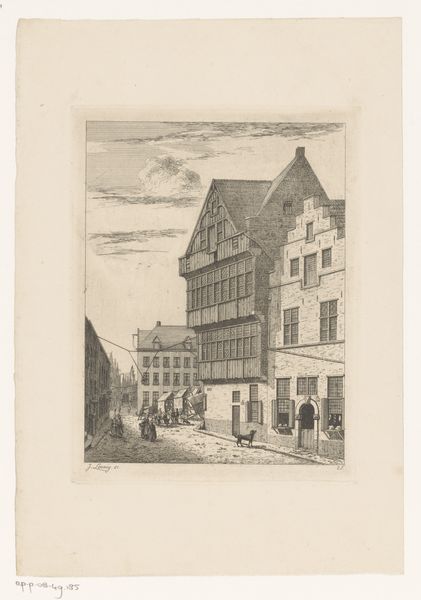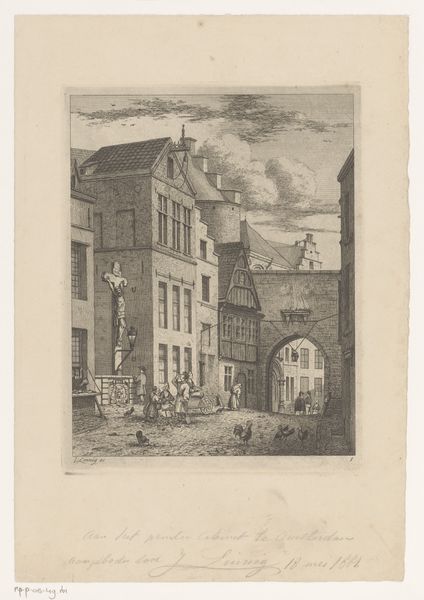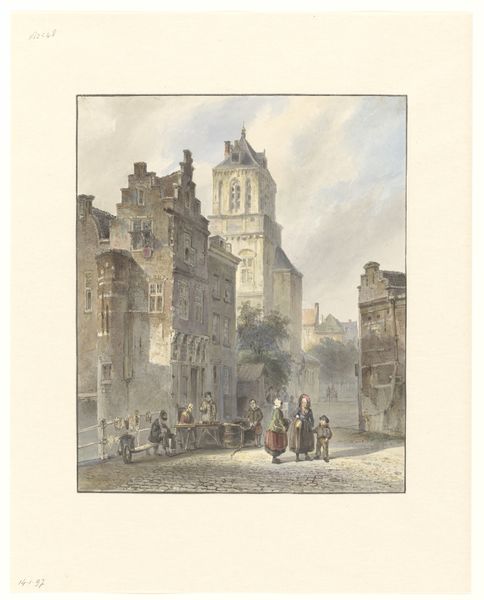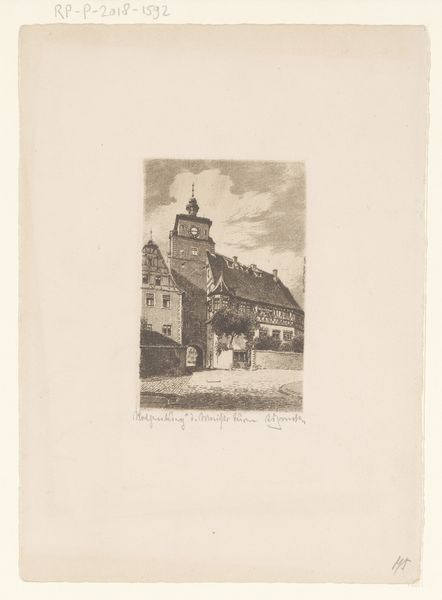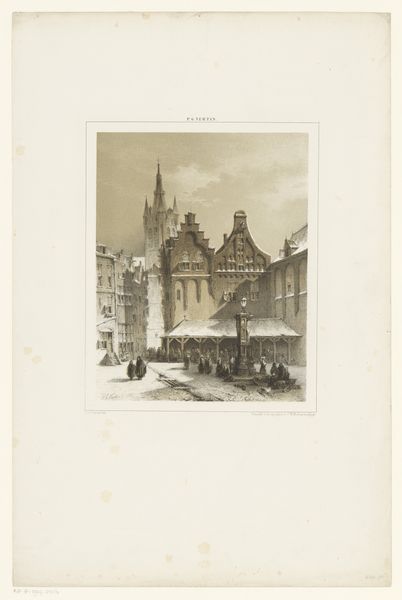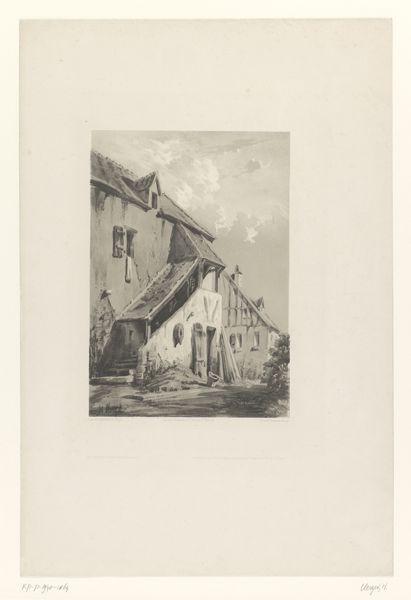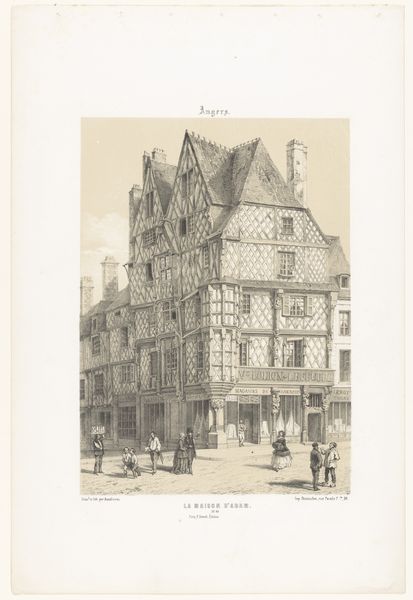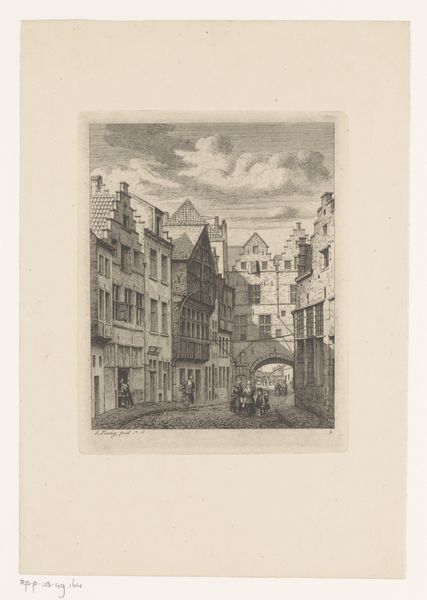
painting, watercolor
#
painting
#
landscape
#
watercolor
#
genre-painting
#
street
#
watercolor
#
realism
Dimensions: height 312 mm, width 282 mm
Copyright: Rijks Museum: Open Domain
Curator: Let’s consider this atmospheric watercolor by Jan Gerard Smits, entitled "Straat te Antwerpen" which translates to "Street in Antwerp." The work dates sometime between 1833 and 1892. Editor: Antwerp, huh? It's like stepping into a hazy dream. There’s something so soft, yet stoic about the scene, especially the muted light on the timbered building. A somber, lived-in quality hangs over everything. Curator: I agree, there's a captivating realism in the artist's rendition of daily life here. Consider how Smits’ use of watercolor captures both architectural details and the more workaday aspects. We have the crucifix prominently displayed to the left, and then a group of resting people under an umbrella just next to it. The street isn't merely a backdrop but a stage for social interaction and also religious symbolism. Editor: It’s like the street is breathing, isn’t it? All that texture and detail – the rough stone, the wood beams, even the figures clustered together, each carefully positioned to tell a different little story. There’s a kind of humble elegance in this realism. Curator: It really makes you consider how such images help reinforce notions of city and national identity. The level of detailed treatment elevates an everyday urban scene into something significant and commemorative. What seems like simply “genre painting” is an exercise in understanding civic identity. Editor: That's fascinating. So, Smits wasn't just painting a pretty picture; he was actually participating in building a collective idea of "Antwerp" through the depiction of its buildings and citizens. The labor involved is evident in the outcome. Curator: Precisely! It shows us the importance of how art intersects with ideas around civic identity and its production in society. Editor: It also offers us the perfect prompt for imagining our own personal experiences within that space, reflecting on the emotional relationship with historical spaces and public gatherings, both from the distant past and our present days.
Comments
No comments
Be the first to comment and join the conversation on the ultimate creative platform.
